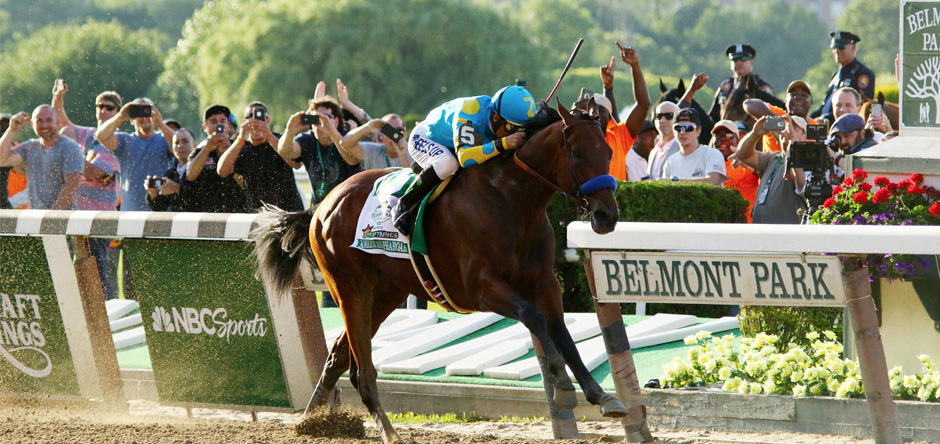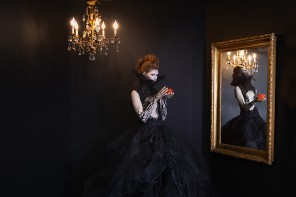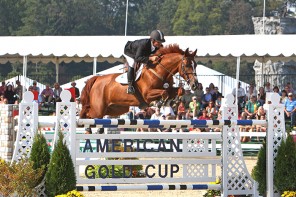He’s made the current Vogue and the cover of Sports Illustrated.
He’s met Julia Roberts.
And, California boy that he is (by way of Santa Anita Park), he’s posed in his Los Angeles Angels of Anaheim — yes, that is their name — jersey.
Is there anyone hotter than the misspelled, bob-tailed, Triple Crown-winning American Pharoah?
AP has captured the heart of a nation not only with his effortless slo-mo stride and versatility — coming from behind in a crowded field to win the Kentucky Derby, reveling in the slop at the Preakness and going wire to wire to take the Belmont and the Crown — but with his gentle charm. He’s good-naturedly donned red roses for Vogue editor Anna Wintour, who has an eye for male beauty. He’s patiently done interviews (well, patiently stood by as his trainer Bob Baffert and jockey Victor Espinoza did an interview with “Today”). He’s daintily nibbled baby carrots. his fave, from the hands of strangers, more a pet than a racehorse, says Justin Zayat — racing and stallion manager of Zayat Stables, which bred and owns the bay colt.
More important, he’s borne the dreams and memories of fans old enough to recall the ghosts of Triple Crowns past and those for whom this is all new on his gracefully muscled back.
Blood will out, and that is especially true of racehorses. Though they’re all said to be born on Jan. 1 of any given year, American Pharoah was actually foaled at 11 p.m. Feb. 2 (Groundhog Day), 2012 at Stockplace Farm in Lexington, Ky. Daddy is Pioneer of the Nile, a real stud, who passed along his easygoing temperament to junior. Mom is Littleprincessemma, with sprinter speed. Like other Triple Crown champs, the Pharoah (the moniker was misspelled somewhere in a naming contest) is descended from some members of that select club of 12, going back to War Admiral (1937), the high-stepping son of the Thoroughbred that experts generally agree is the greatest America has ever produced, Man o’ War.
Along the way, AP lost some of his tail (perhaps to mischievous stablemate Mr. Z) but gained an efficient, gliding motion. This great-great-great-grandson of Secretariat disappointed in his first race, in part because he hates crowd noise — he now wears spongy earplugs — but finished as the top 2-year-old. He has breezed through his 3-year-old campaign, the most lightly raced horse in the Crown’s history with only eight starts. (And yet, he has faced more challengers on his way to the Crown, 31, than any horse except his ancestor War Admiral, who bested 32.)
But racehorses are no mere athletes. They’re symbols of a country’s soul. (Remember the letters children wrote when Kentucky Derby winner Barbaro broke a leg at the 2006 Preakness and ultimately had to be put down?) Many of the 90,000 who attended the Belmont this year and the 22 million who watched on TV — including this writer — wept for their youth.
“The last time there was a Triple Crown champion (Affirmed, 1978), I was a student at Syracuse, Jimmy Carter was president and the cell phone hadn’t been invented,” says Brandon Steiner, founder and CEO of New Rochelle-based Steiner Sports Marketing, who was slated recently to host a “Triple Crown Celebration With Victor Espinoza” in Manhattan. “To give some historical perspective, Kobe Bryant, Usher, Manny Pacquiao and Ashton Kutcher were all born that year. It was a long time ago.”
American Pharoah represents the way we were.
And, perhaps, the way we would like to be.





